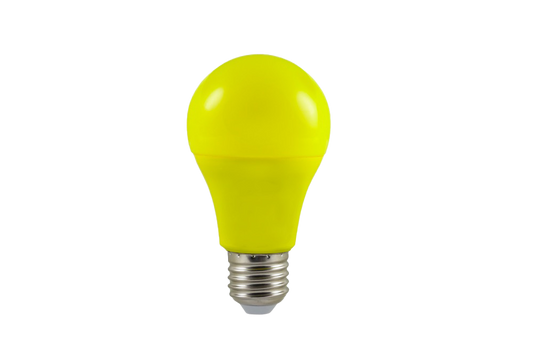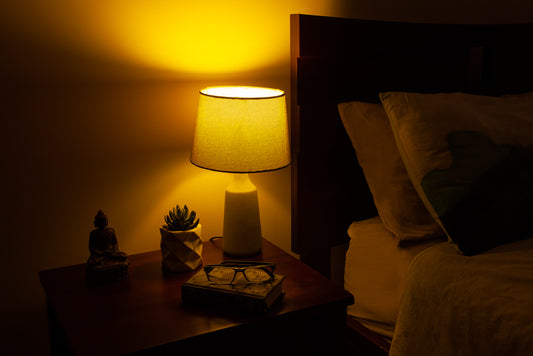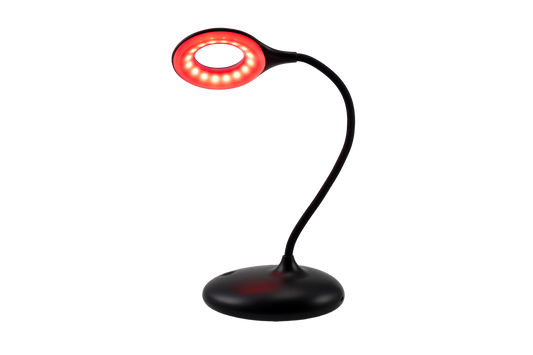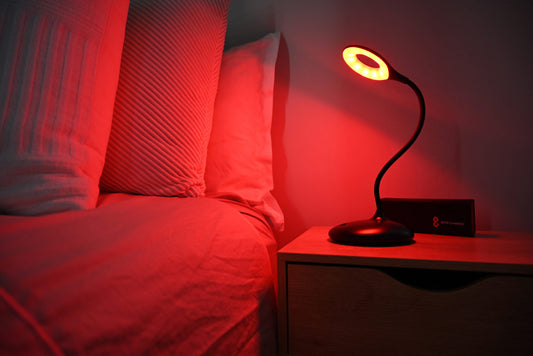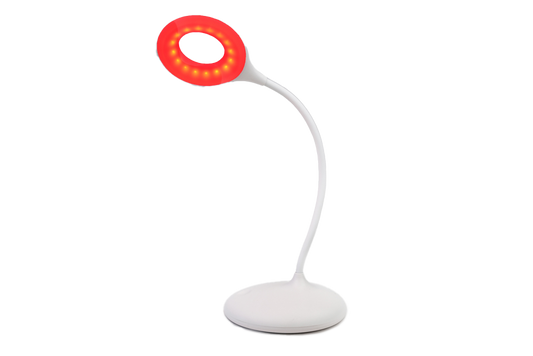What is Full Spectrum LED Lighting?
Andy MantSunlight has many documented benefits. Sunlight is full spectrum light that helps you maintain a healthy circadian rhythm. It has been shown in academic studies that artificial blue light can be harmful to your health, if received in isolation, and disrupt your body clock.
Where can blue light be found in isolation?
The answer is most artificial LED light sources and fluorescent lighting.
In order to maintain a healthy circadian rhythm its essential to surround yourself with full spectrum lighting. Let me explain to you why this is so important.
What is a Circadian Rhythm?
Your ancestors lived outside and developed something called a circadian rhythm as they evolved. Your circadian rhythm is a mini metaphorical clock system that is located in your brain. Your circadian rhythm (body clock) tells your body what time of day it is by receiving messages through your eyes and skin from light.
The light that was used as environmental cues to your circadian rhythm were from the sun, this is the main driver of circadian signalling that keeps us healthy.
Our circadian rhythm then helps release and suppress hormones based on the light signals it receives throughout the day.
Sunlight during the day tells our circadian rhythm that its daytime, to release more cortisol, serotonin and dopamine and keep us awake. No sunlight after sunset tells our body clock that its nighttime and to lower cortisol and start releasing melatonin for sleep and recovery.
This system worked perfectly when your ancestors lived in nature. In the modern world we have brought mini artificial suns into our homes and offices which do not match the full spectrum of sunlight.
What is the result of this?
Mixed light signalling to your circadian rhythm which may be leading to disrupted sleep, eye strain and headaches.
The Problem with Standard LED Lighting
The issue with standard LED lighting is that it contains mainly blue light. Conventional LED bulbs emit a white light that is high in blue light and lacking in restorative red and amber light. Blue light has been shown in countless studies to disrupt sleep, cause eye strain, headaches and migraines. It's the reason we advocate wearing blue light glasses to help manage blue light exposure.

Lack of sunlight in winter months in the northern hemisphere can also lead to mild seasonal affective disorder. Using SAD Lamps delivers blue light in isolation which, while being good for SAD, may disrupt your circadian rhythm.
Studies have always shown that blue light from standard LED globes can accelerate skin ageing. Wearing blue light glasses will not help you with this issue.
What can you do to bring more balanced light inside?
Full Spectrum Light Bulbs
Full spectrum light bulbs contain balanced amounts of all colours of light. Full spectrum LED lighting can bring the benefits of sunlight inside, without emitting harmful UV light.
These circadian friendly light bulbs mimic natural sunlight which can help keep your circadian rhythm healthy, allow you to sleep better and reduce digital eye strain and headaches.
Originally these types of light bulbs were used to help plants grow. Full spectrum LED grow lights have been shown to increase plant growth when used in place of traditional LED lights.
A full spectrum light source must contain balanced amounts of each visible color of light. There is no universally agreed definition for a full spectrum light bulb but as long as it contains the entire visible spectrum across the appropriate range of wavelengths it can be considered full spectrum.
Some people argue that full spectrum lighting should also include invisible wavelengths of light such as UV and Infrared light. Other's argue that color temperatures also play a part and must mimic natural light in that respect.
The below spectrum report shows the light emitted from BON CHARGE Full Spectrum Light Bulbs.

The wavelengths of light emitted from the sun change throughout the day and into the evening. It's important that the best full spectrum light bulbs change the frequencies of light they emit throughout the day. This helps keep your circadian rhythm healthy and in sync with nature.
Smart lighting is one way to allow frequencies of light to change throughout the day, but so far these have not created balanced light, but instead just different colors.
Whilst red light is great for sleep and relaxing in the evening, blue light during the day in isolation is not too good and should be balanced instead.
Another issue with smart lighting is its controlled via bluetooth or WIFI which emit harmful EMF radiation.
Regular LED lighting also flickers which can be a problem for your health according to this study.
BON CHARGE Full Spectrum Light Bulbs have been designed to be flicker free, manually changed through 3 settings (Morning/Afternoon x Daytime x Nighttime).
The Best Full Spectrum Light Bulbs
The best full spectrum lighting must have the following attributes:
- Color Matching with natural sunlight
- Designed to eradicate flicker
- Be low in harmful EMF radiation
- Have settings for morning, afternoon, daytime and evening
- Be energy saving therefore good for the environment.
BON CHARGE Full Spectrum LED Light Bulbs are flicker free, contain no harmful EMF radiation, mimic natural sunlight, are energy saving and come with the following settings:
- Morning/Afternoon - Low blue light and balanced yellow, red and amber light
- Daytime - High amounts of all visible light, the same as natural daylight during the daytime
- Nighttime - Zero blue light, green light and high levels of amber and red light, much like the campfire your ancestors would have seen after sunset.

Check out our Full Spectrum Light Bulbs and learn more about how they can be implemented into your life to improve your light environment.
Further Reading
Can Red Light Help Improve Your Sleep?
Scientific References
Effects of light on human circadian rhythms, sleep and mood
What is blue light? The effect blue light has on your sleep and more
Research progress about the effect and prevention of blue light on eyes
Seasonal Affective Disorder: An Overview of Assessment and Treatment Approaches
Blue Light Protection, Part I-Effects of blue light on the skin
Red Light and the Sleep Quality and Endurance Performance of Chinese Female Basketball Players
Light Emitting Diode Lighting Flicker, its Impact on Health and the Need to Minimise it










